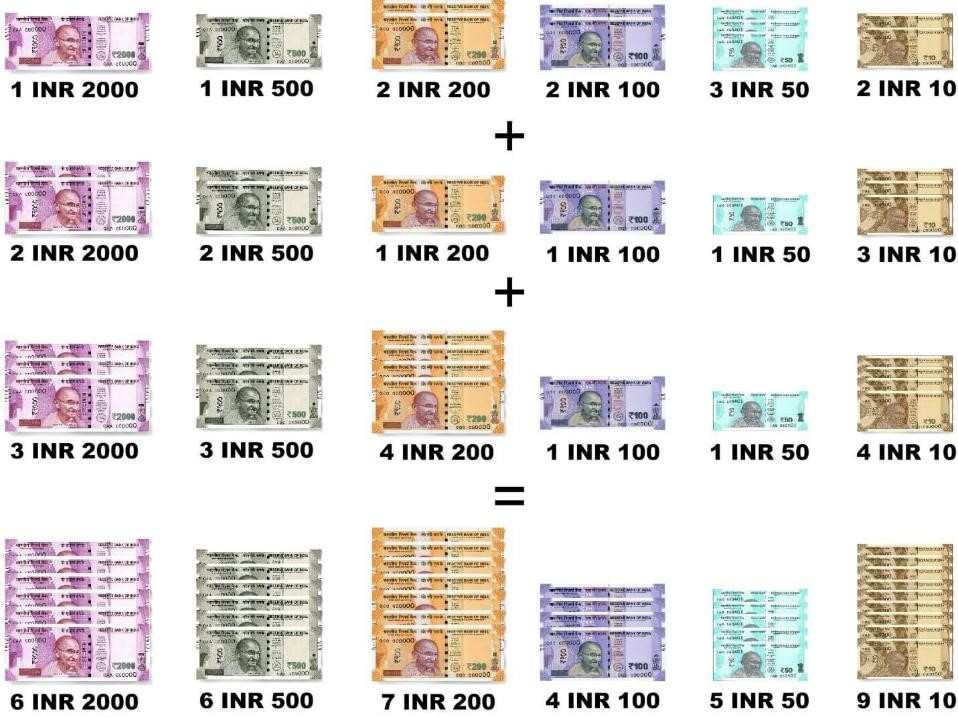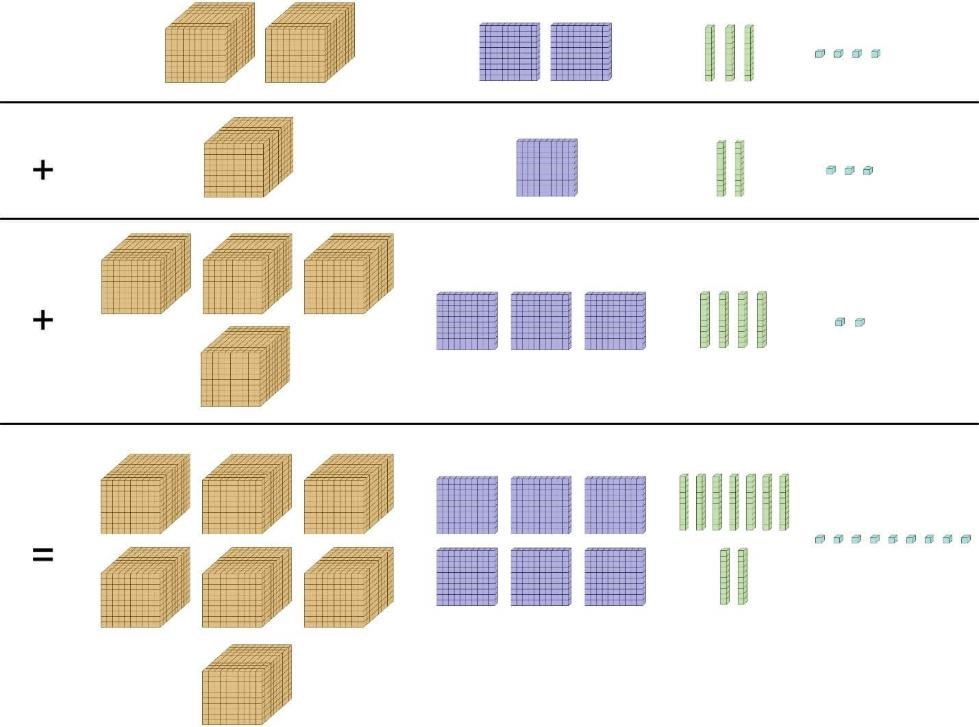Adding 2 apples + 2 oranges + 3 apples + 2 apples
This Learning Outcome and the next are devoted to the ‘incomparability of apples and oranges’. The lessons from these two Outcomes carry tremendous significance for understanding the concept as well as the method (an algorithmised process) of addition.
We have already discussed the universal description of addition – statements that are always true about addition of things, or numbers. The description is all that we need to know to develop the process of adding multiple numbers.
However, being focused on capturing all the conceptual features of addition to discover the process of addition, the universal description does leave out an interesting feature of the sum in addition. Expectedly, this feature is not anything that is needed to understand the process of addition, it is an outcome of the process of addition.
We better uncover this distinctive feature of sum because it is closely linked to the ‘idea of process’. A comprehensive understanding of the process of addition is obviously dependent on the idea and the process of addition; we must know the essential nature of processes.
Sum is different
A ‘process’ is something of an input-output system, wherein what goes into the process as inputs is transformed into what comes out as output. The output must be distinguishable from the inputs in some way! The difference between the inputs and outputs may be minute, but there must be some transformation.
Naturally, the process of addition is no exception – what goes as addends is not the same as the sum (the total). The process of addition rearranges the addends to create a ‘differently packaged/arranged’ sum; of course, the nature of the matter that the addends are does not change.
Let us study the ‘process part’ of the ‘process of addition’ – how the process of addition rearranges what all are added – through a couple of simple everyday examples:
What is 2 apples + 2 oranges + 3 apples + 2 apples?

The picture shows the addends in this addition expression, there are four addends – 2 apples, 3 oranges, 2 apples, and 2 apples. Are you thinking why there are three different addends containing apples in the same expression? The expression represents the reality as is – it shows that there are 4 baskets of fruits – 3 of apples and 1 of oranges. This may be due to many reasons. For instance, it shows the fruit baskets kept in each of the three bedrooms of a house (1 basket of apples each), and one kept on the dining table (1 basket of oranges).
What is 2 apples + 2 oranges + 3 apples + 2 apples? It is no surprise, the response to the question is 7 apples and 2 oranges.
Yet, the physical meaning of 7 apples and 2 oranges is the surprise as it gives a new insight into addition. In the sum, all the apples will be together as one quantity, as shown in the picture underneath. And this is what the process of addition does – addition rearranges, repackages the things it adds, and this is reflected in the way the things are part of the sum.

This property of addition is really interesting in that even a 2-year old knows this property – give 2 apples, 2 oranges, 2 apples and 3 apples to very young children, and witness them sort the apples together (by the colour and look) and place all the 7 apples together!
But how does the rearrangement of the addends happen? Are there conditions on the rearrangement? Let us explore another example to understand this, as under:
The picture shows apples in three bowls – two full and one with space left for more (assume 12 apples can be kept in this bigger bowl) – and 7 oranges lying loose, without a bowl. There are only these three bowls to keep the fruits, so that the oranges are kept separately.
Now let us visually add the apples and oranges.

What do you expect to see in the sum? How would the arrangement of the apples and oranges change? Would you place all the apples in the big bowl (which can accommodate all the apples in the smaller bowls also)? All the oranges in the two smaller bowls? If this is what you may have done, or anything similar, then you already know what the question in the Learning Outcome is all about.

The lesson is – the sum has similar things together. And the nature of rearrangement is dependent on the nature of the capacity of arrangement of things. Here, up to 12 apples could be accommodated in the big bowl so all 11 apples are placed in the big bowl. The smaller bowls can take up to 4 apples/oranges, so 2 bowls are used for rearranging oranges.
The rule for rearrangement of the addends in the sum
In the sum, the rearrangement of the things in the addends is done in a way that the use of the space/capacity to keep/store quantities is optimal, efficient. This happen for two reasons:
- Things in the addends may not be kept in the most efficient way because we keep things the way it is convenient to us in terms of the ease of taking things out, our way of separating different kinds of things (e.g., all kinds of ripe fruits may be in one bowl, and the rest in another), etc.
- When we do get an opportunity of putting more things together, we always try to rearrange the existing and added things together (in our own way, but we do try to rearrange)
Thus, it just suffices to say that the things in sum are always better organized than the things in the addends.
This rearrangement is equally applicable to addition of numbers too. Briefly, when adding decimal numbers, the size of packaging is such that at any place value, the maximum number allowed is 9. If the sum of the digits at any place value is more than 9, it will be repackaged and carried to the appropriate place value (where the packet will match the packet at that place value, and ‘efficiently fit in’).
More discussion at this point will be complicating the matter – the appropriate Learning Outcome to detail this rearrangement of numbers in the sum is in the next chapter where carry is explored.
Summary
The process of addition rearranges the addends to create a ‘differently packaged/arranged’ sum. 2 apples + 2 oranges + 3 apples + 2 apples is 7 apples + 2 oranges.
Additional details
Let us experience some more addition scenarios to observe how like things added come together in the sum.
An example of how like currency notes come together when we add different denominations of currency.

An example of how on adding, digits at like place values come together in the sum

Excerpted from the book ‘Foundations of Addition (Mathematics as a language)’ by Sandeep Srivastava and Saloni Srivastava
